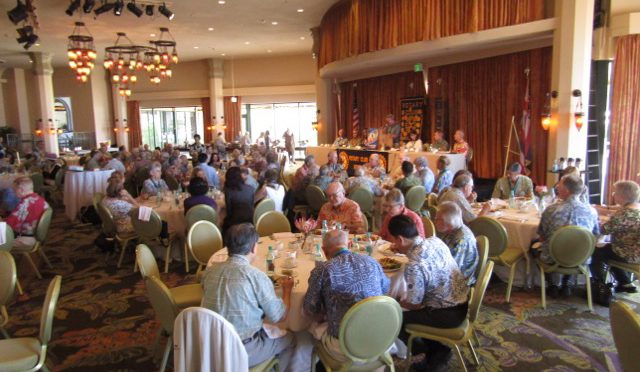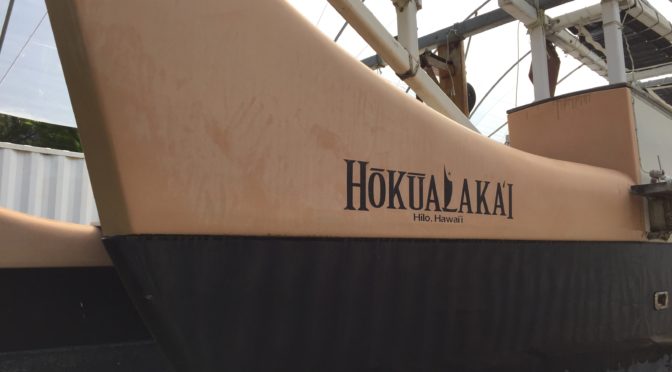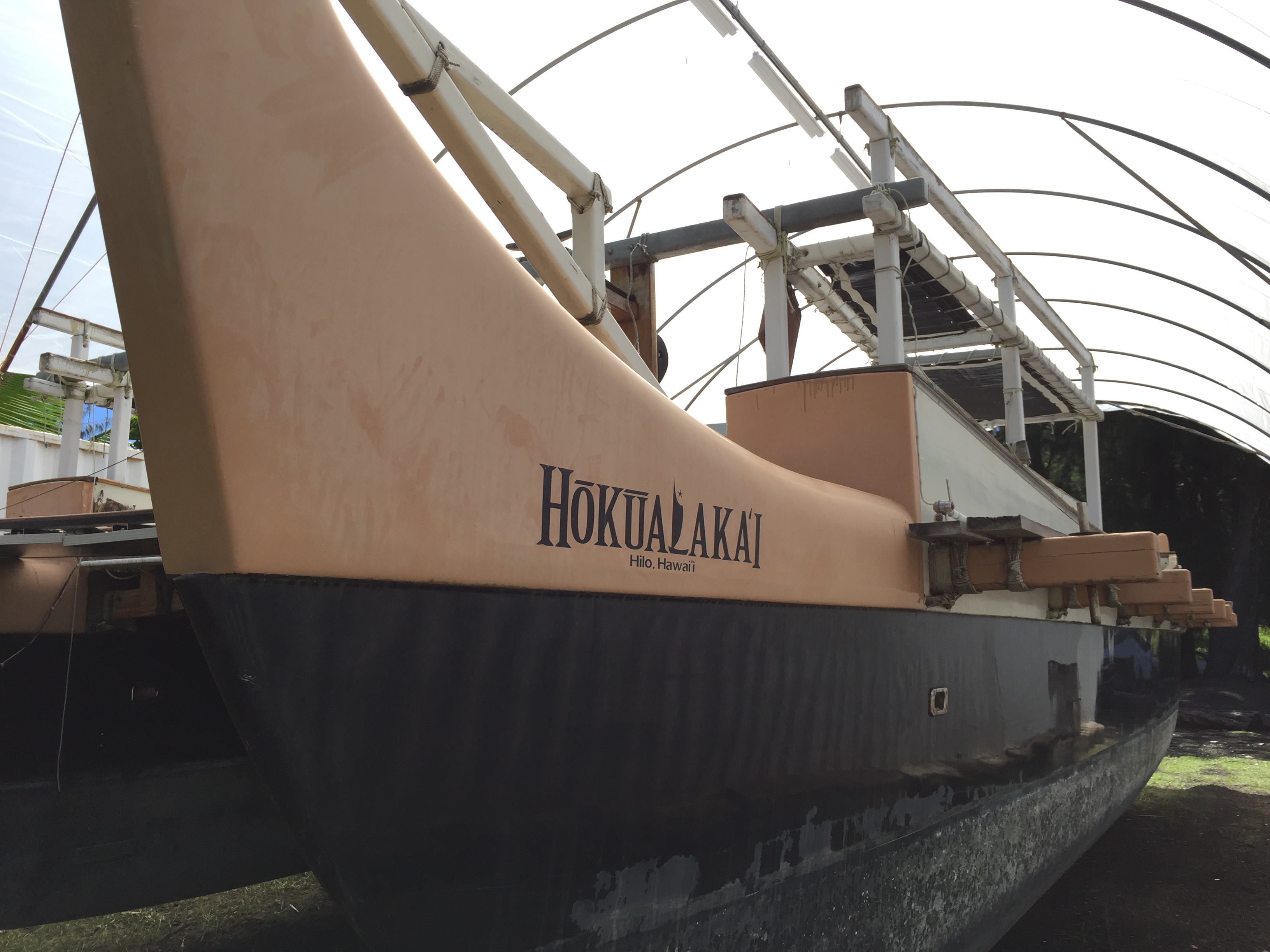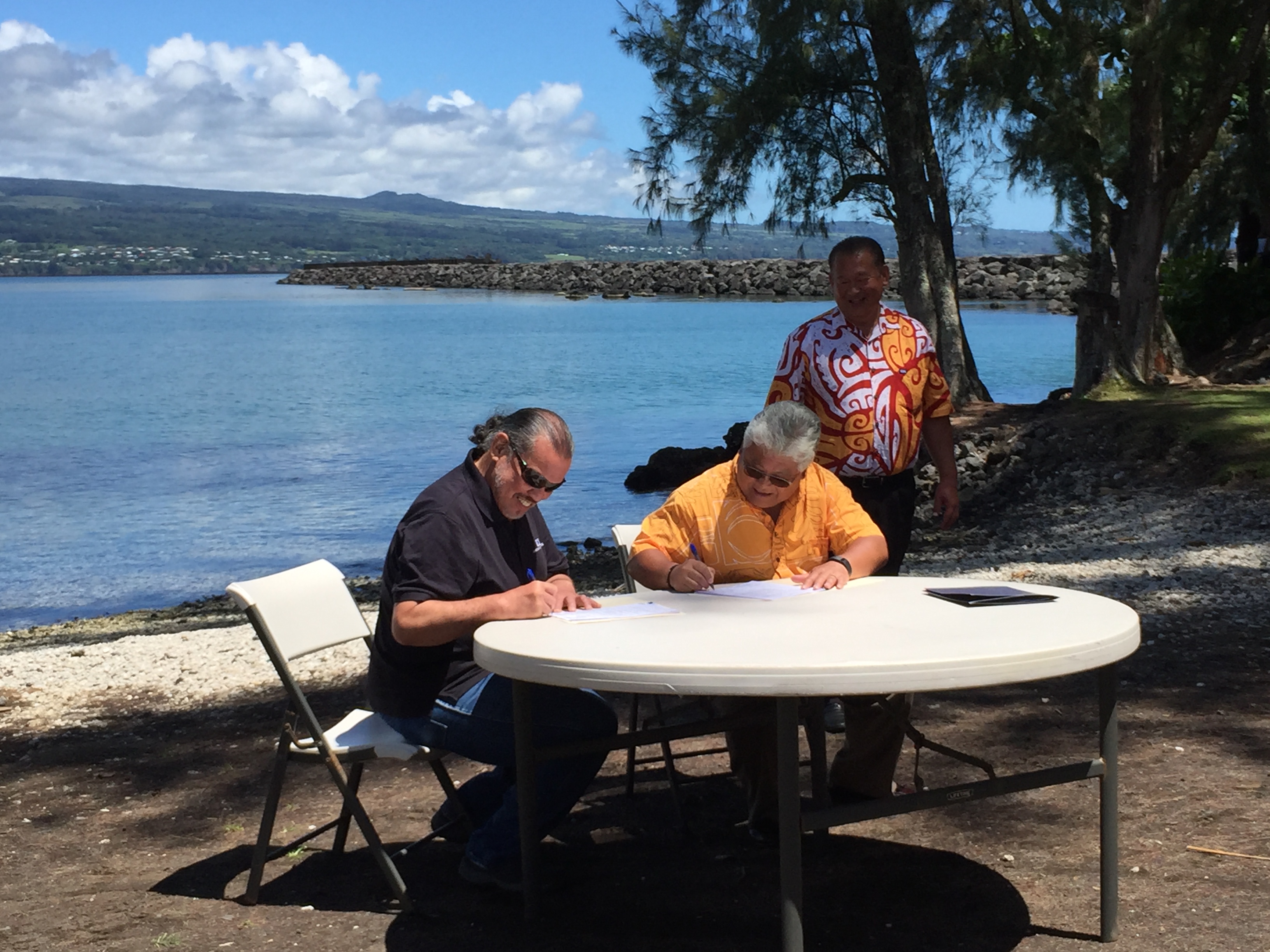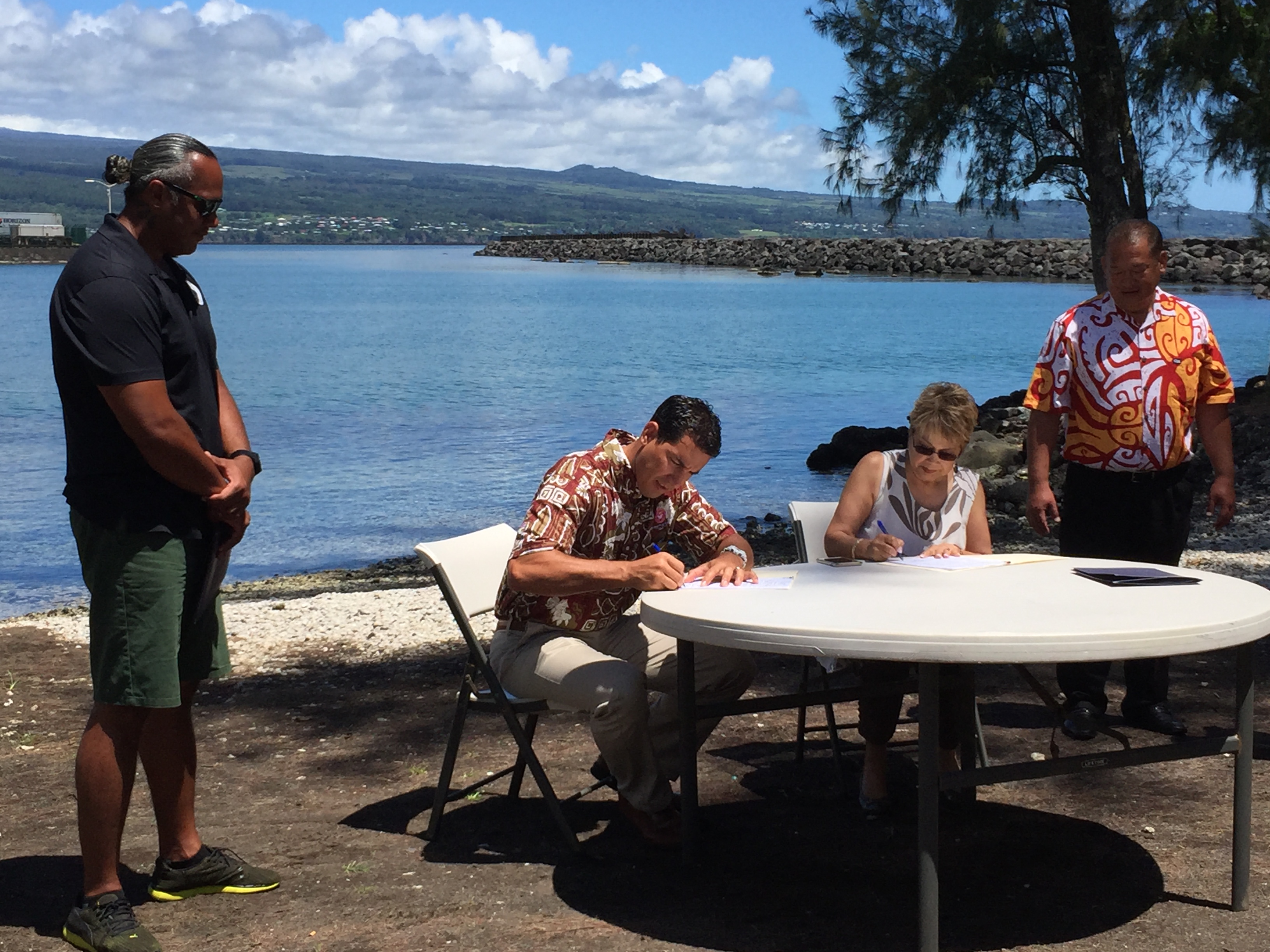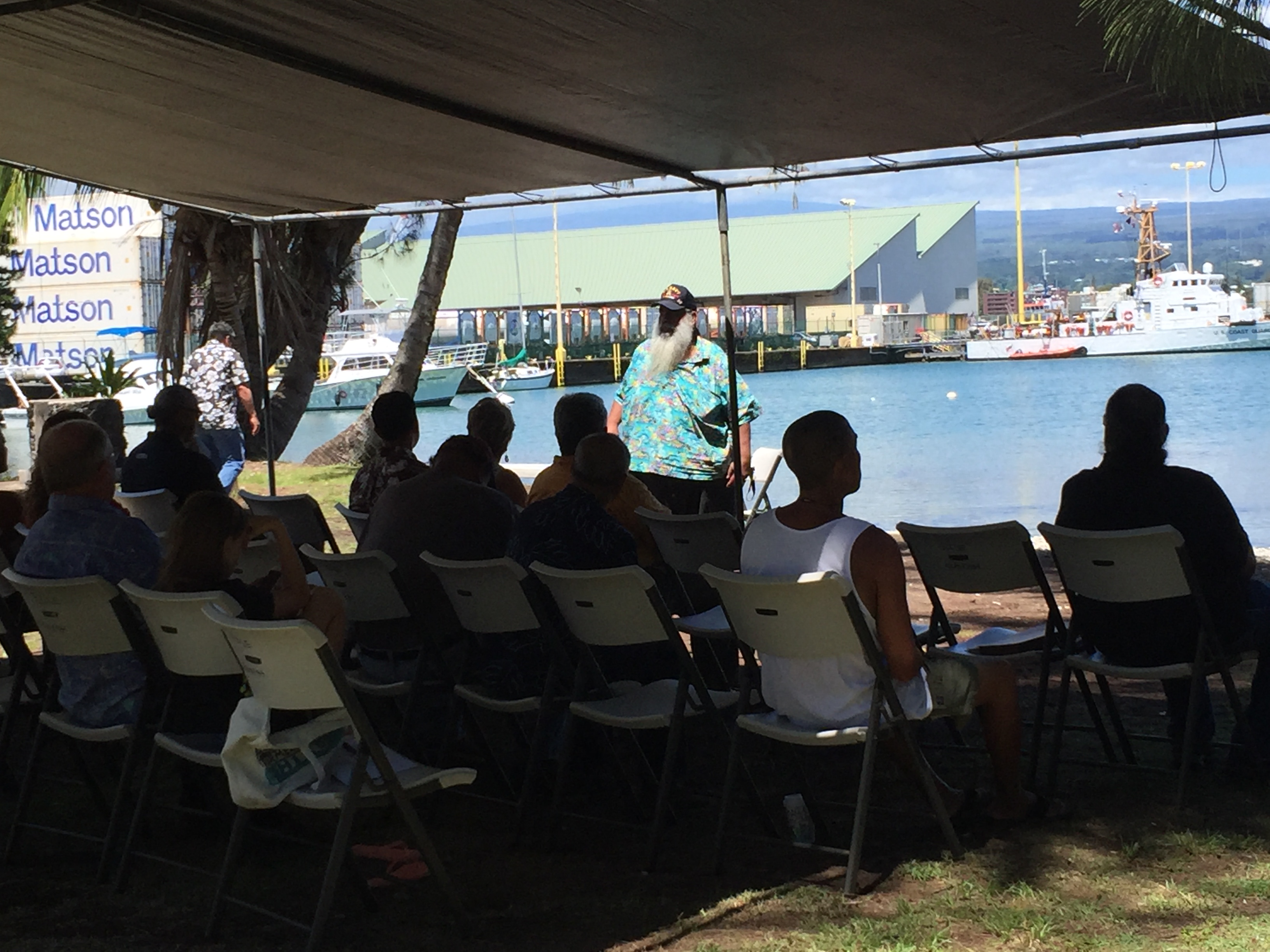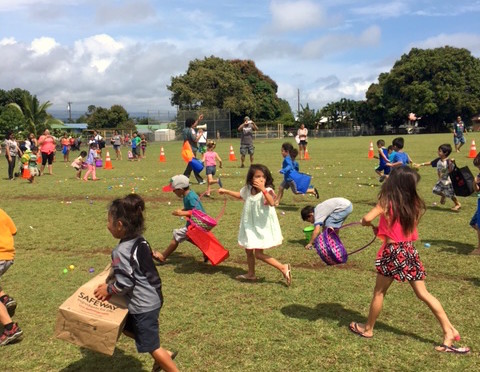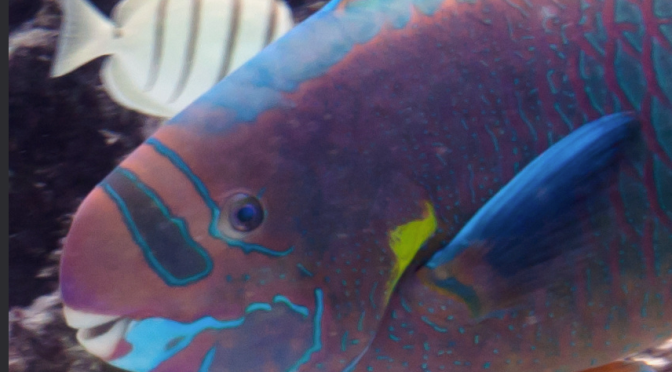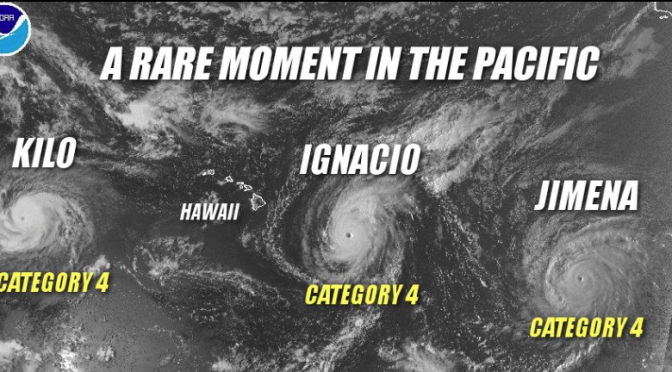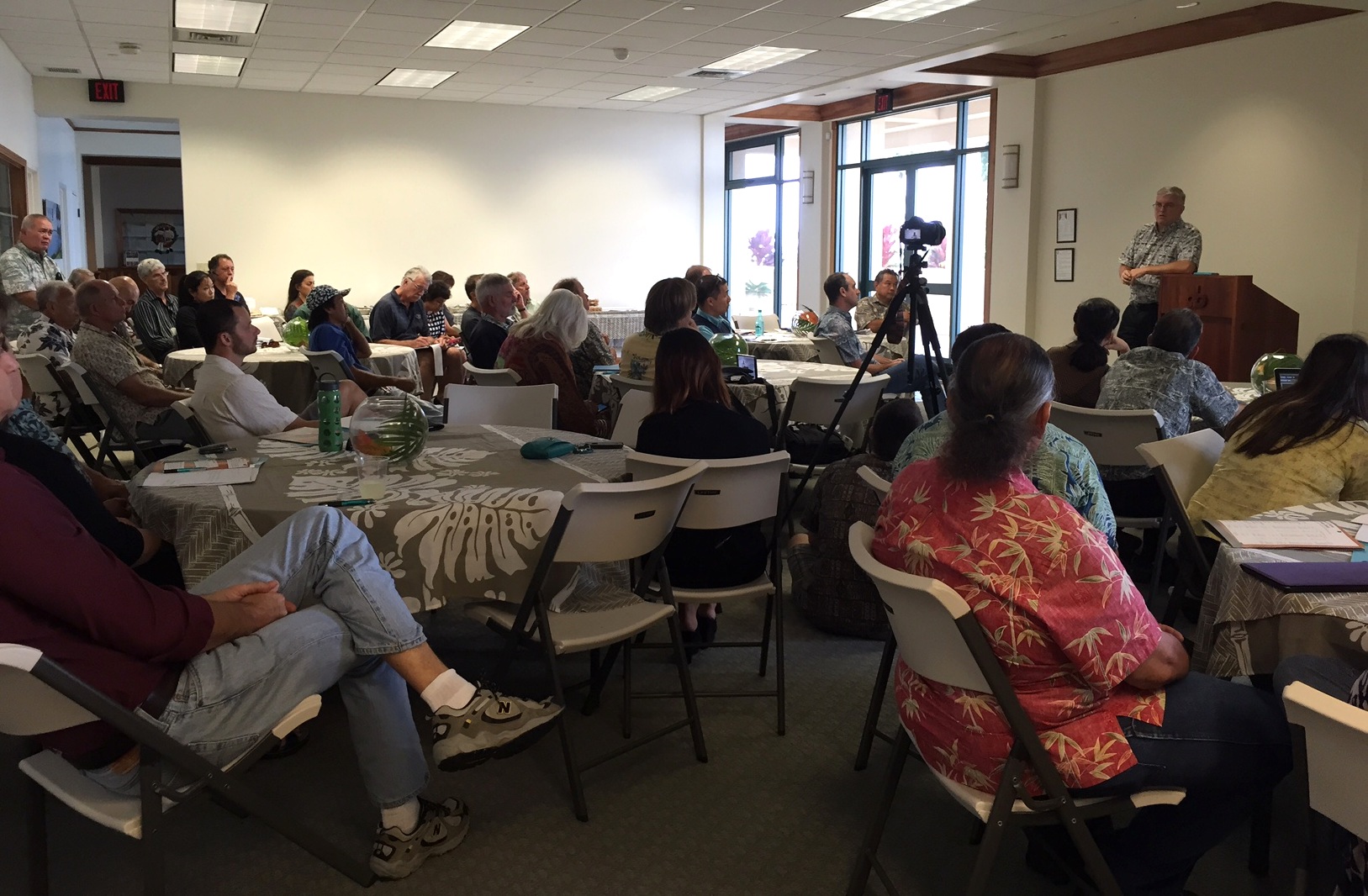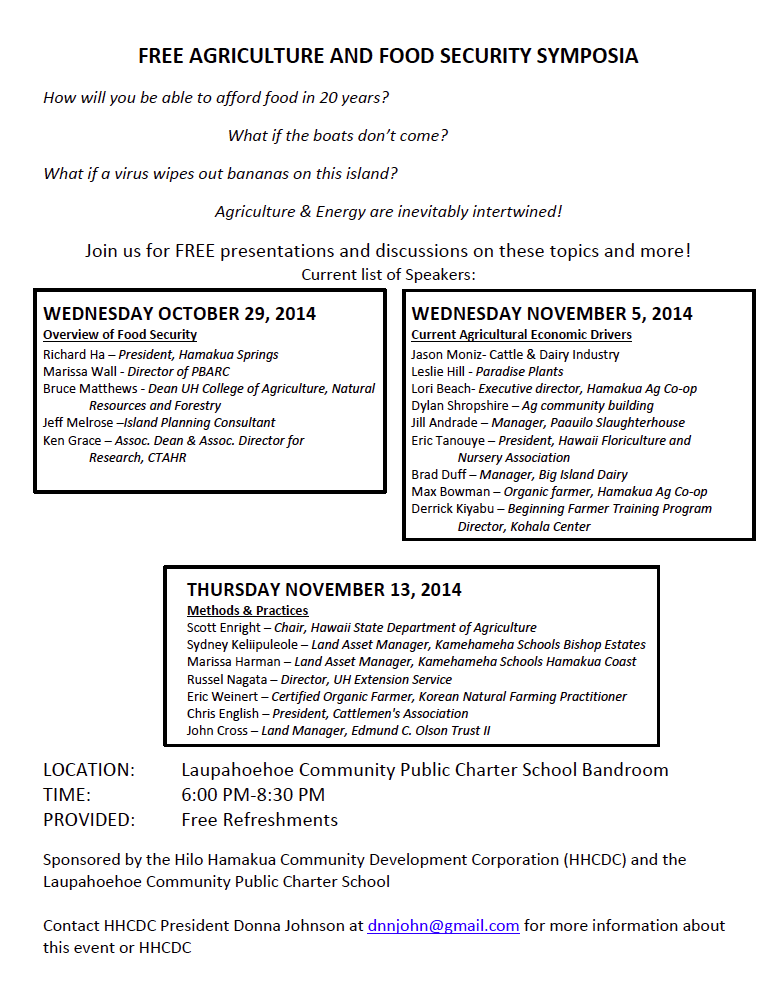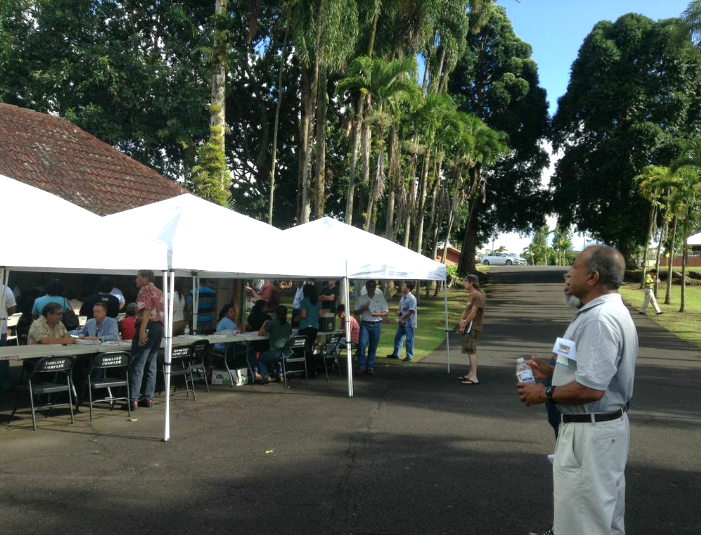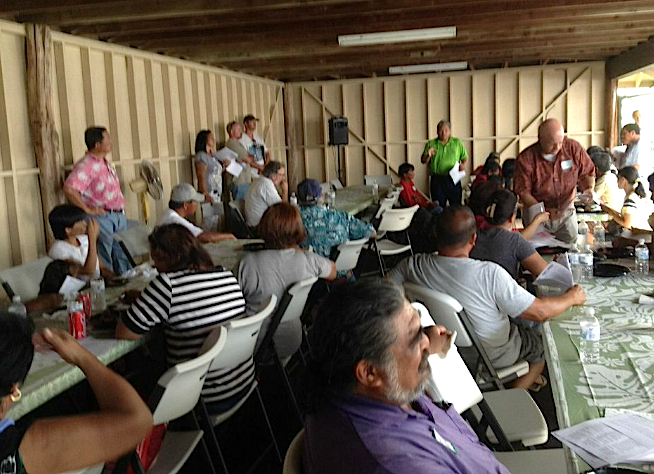Keahi Warfield, president of the native Hawaiian group Perpetuating Unique Education Opportunities (PUEO), spoke at the Rotary Club of Honolulu Tuesday. He said the Thirty Meter Telescope (TMT) offers educational opportunities we shouldn’t pass up.
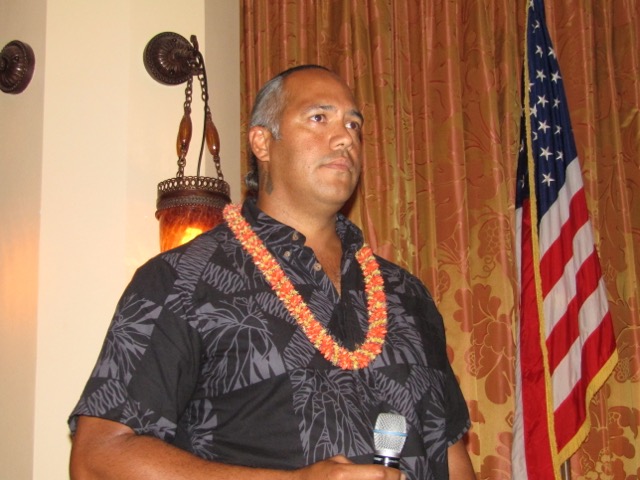
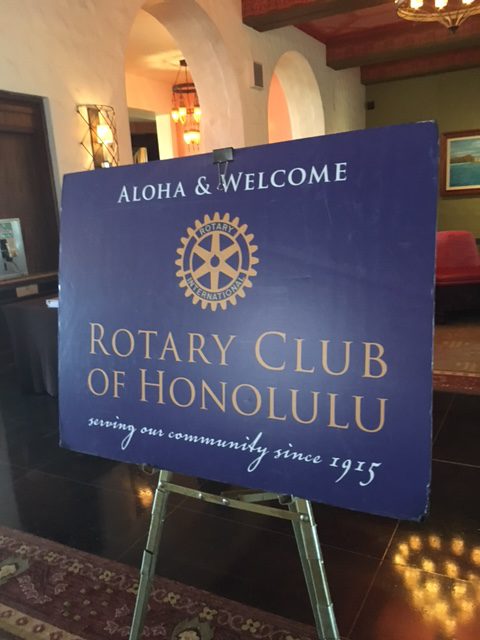
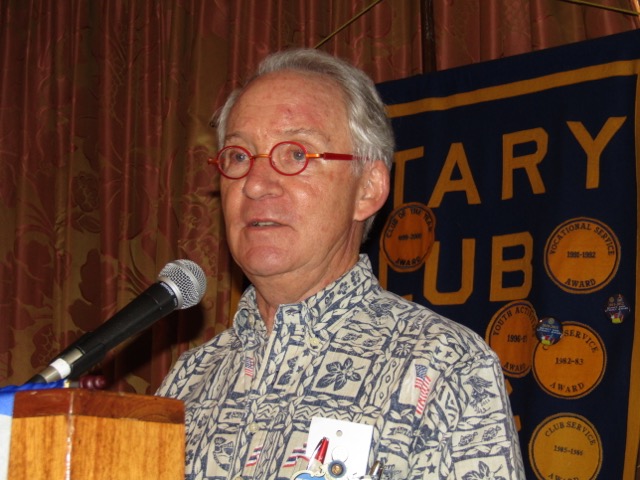
From the Honolulu Star-Advertiser:
Pro-telescope group touts educational benefits
By Jennifer Sinco Kelleher, Associated Press
August 17, 2016
Building a giant telescope atop Mauna Kea will come with educational opportunities that Hawaii shouldn’t close the door to, the president of a Native Hawaiian group that supports the project said.
Perpetuating Unique Educational Opportunities President Keahi Warfield told a Waikiki hotel banquet room filled with members of the Rotary Club of Honolulu on Tuesday that he believes there’s a “silent majority” of the public who support the Thirty Meter Telescope….
And I strongly agree – both that the TMT has educational opportunities for our Big Island keiki that we cannot pass up, and about the “silent majority” in favor of the project.
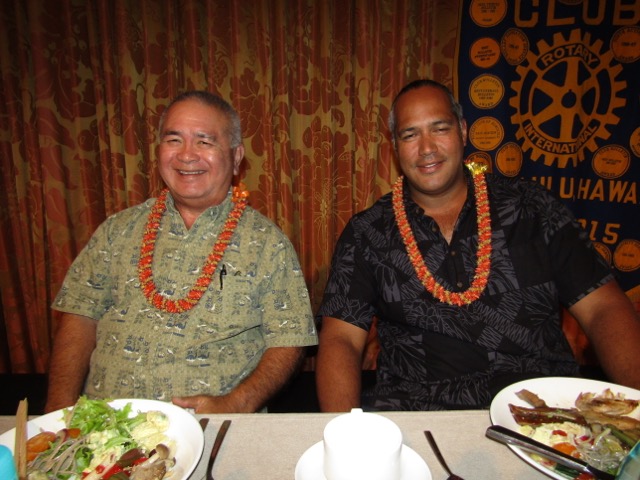
I introduced Keahi before he spoke and here’s what I said:
Who are we? I’m from the Kamahele family in lower Puna. My great-great grandfather had 12 boys and one daughter. All the Kamaheles are related.
I’ve been farming for 30 years. Our farm is Hamakua Springs, which is on 600 fee-simple acres. I describe us as being a triple bottom-line farmer. To be sustainable we need to be socially, environmentally and economically sustainable. The “social” aspect includes culture and education. It includes all of us, not just a few of us. This is the part I am especially focused on.
The County of Hawaii has the lowest median family income, and the highest suicide and homelessness rates. The game changer is education. It’s not the largest, strongest or the smartest that survives – it’s the ones who can adapt to change.
The pluses have to exceed the minuses or you go extinct. That applies to organisms and organizations as well as civilizations.
Education is the game changer that allows us to adapt.
Regarding the TMT: Henry Yang is the president of the TMT. And he’s the type of person you can do business with on a handshake. He and Jean-Lou Chameau, the former president of Cal Tech and now president of the King Abdullah University of Science and Technology in Saudi Arabia, visited the Big Island 15 times. They became well known in the community.
One visit to Keaukaha was memorable. They dropped in unexpectedly at a Kupuna Day function. They had become so familiar that the people greeted them with, “Come, come, come, go eat.”
Keiki education is the common denominator that everyone on all sides of the issue can agree upon. That’s how the THINK fund was born. The THINK Fund is a one million annual contribution to Big Island student education from the Thirty Meter Telescope. They left it to the community to choose the direction.
I’ve been in the middle of this issue for nearly ten years, and I am very pleased that PUEO has taken a seat at the table.
I have noticed in the last few months that public opinion is shifting. In the Ward Research poll just released, the number opposed to the TMT has gone down from 39 percent to 31 percent. I have a Facebook page that talks about ag and energy and I’ve noticed many more Hawaiian surname “likes,” compared to just three months ago. I also notice more young people participating. This is the most encouraging part to me.
My role now is support. I can see the young people starting to come out and I could not be more pleased.
The PUEO group is made up of very credible native Hawaiian people. In all my years of knowing them, they only talk about the community, the keiki, and future generations. I am very proud to be allowed to work with these people.
Keahi is the perfect leader for PUEO. I’ll do everything I can to support his efforts. Aloha

